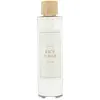What's inside
What's inside
 Key Ingredients
Key Ingredients

 Benefits
Benefits

 Concerns
Concerns

No concerns
 Ingredients Side-by-side
Ingredients Side-by-side

Water
Skin ConditioningMethylpropanediol
SolventTriethylhexanoin
MaskingHydrogenated Poly(C6-14 Olefin)
Emollient1,2-Hexanediol
Skin ConditioningNiacinamide
SmoothingPentylene Glycol
Skin ConditioningOryza Sativa Extract
AbsorbentPortulaca Oleracea Extract
Skin ConditioningUlmus Davidiana Root Extract
Skin ConditioningOryza Sativa Bran Extract
Skin ConditioningAmaranthus Caudatus Seed Extract
Skin ConditioningHydrogenated Lecithin
EmulsifyingGlycerin
HumectantPolyglyceryl-10 Myristate
Skin ConditioningButylene Glycol
HumectantEthylhexylglycerin
Skin ConditioningAdenosine
Skin ConditioningCellulose Gum
Emulsion StabilisingCaprylyl Glycol
EmollientTocopherol
AntioxidantWater, Methylpropanediol, Triethylhexanoin, Hydrogenated Poly(C6-14 Olefin), 1,2-Hexanediol, Niacinamide, Pentylene Glycol, Oryza Sativa Extract, Portulaca Oleracea Extract, Ulmus Davidiana Root Extract, Oryza Sativa Bran Extract, Amaranthus Caudatus Seed Extract, Hydrogenated Lecithin, Glycerin, Polyglyceryl-10 Myristate, Butylene Glycol, Ethylhexylglycerin, Adenosine, Cellulose Gum, Caprylyl Glycol, Tocopherol
Water
Skin ConditioningPentylene Glycol
Skin ConditioningEthoxydiglycol
HumectantSalicylic Acid
MaskingGlycolic Acid
BufferingLactic Acid
BufferingCitric Acid
BufferingTartaric Acid
BufferingMalic Acid
BufferingPyrus Malus Fruit Extract
Skin ConditioningVitis Vinifera Leaf Extract
Skin ConditioningCitrus Medica Limonum Fruit Extract
Skin ConditioningVaccinium Myrtillus Fruit/Leaf Extract
AstringentSaccharum Officinarum Extract
MoisturisingPropylene Glycol
HumectantPhenethyl Alcohol
Masking1,2-Hexanediol
Skin ConditioningTasmannia Lanceolata Fruit/Leaf Extract
AntioxidantCentella Asiatica Extract
CleansingInulin
Skin ConditioningFructose
HumectantSodium Hyaluronate Crosspolymer
HumectantSodium Hyaluronate
HumectantSodium Acetylated Hyaluronate
HumectantHydrolyzed Sodium Hyaluronate
Skin ConditioningPanthenol
Skin ConditioningNiacinamide
SmoothingZinc PCA
HumectantAnthemis Nobilis Flower Extract
MaskingAloe Barbadensis Leaf Juice
Skin ConditioningCurcuma Longa Root Extract
MaskingWater, Pentylene Glycol, Ethoxydiglycol, Salicylic Acid, Glycolic Acid, Lactic Acid, Citric Acid, Tartaric Acid, Malic Acid, Pyrus Malus Fruit Extract, Vitis Vinifera Leaf Extract, Citrus Medica Limonum Fruit Extract, Vaccinium Myrtillus Fruit/Leaf Extract, Saccharum Officinarum Extract, Propylene Glycol, Phenethyl Alcohol, 1,2-Hexanediol, Tasmannia Lanceolata Fruit/Leaf Extract, Centella Asiatica Extract, Inulin, Fructose, Sodium Hyaluronate Crosspolymer, Sodium Hyaluronate, Sodium Acetylated Hyaluronate, Hydrolyzed Sodium Hyaluronate, Panthenol, Niacinamide, Zinc PCA, Anthemis Nobilis Flower Extract, Aloe Barbadensis Leaf Juice, Curcuma Longa Root Extract
 Reviews
Reviews

Ingredients Explained
These ingredients are found in both products.
Ingredients higher up in an ingredient list are typically present in a larger amount.
1,2-Hexanediol is a synthetic liquid and another multi-functional powerhouse.
It is a:
- Humectant, drawing moisture into the skin
- Emollient, helping to soften skin
- Solvent, dispersing and stabilizing formulas
- Preservative booster, enhancing the antimicrobial activity of other preservatives
Niacinamide is a multitasking form of vitamin B3 that strengthens the skin barrier, reduces pores and dark spots, regulates oil, and improves signs of aging.
And the best part? It's gentle and well-tolerated by most skin types, including sensitive and reactive skin.
You might have heard of "niacin flush", or the reddening of skin that causes itchiness. Niacinamide has not been found to cause this.
In very rare cases, some individuals may not be able to tolerate niacinamide at all or experience an allergic reaction to it.
If you are experiencing flaking, irritation, and dryness with this ingredient, be sure to double check all your products as this ingredient can be found in all categories of skincare.
When incorporating niacinamide into your routine, look out for concentration amounts. Typically, 5% niacinamide provides benefits such as fading dark spots. However, if you have sensitive skin, it is better to begin with a smaller concentration.
When you apply niacinamide to your skin, your body converts it into nicotinamide adenine dinucleotide (NAD). NAD is an essential coenzyme that is already found in your cells as "fuel" and powers countless biological processes.
In your skin, NAD helps repair cell damage, produce new healthy cells, support collagen production, strengthen the skin barrier, and fight environmental stressors (like UV and pollution).
Our natural NAD levels start to decline with age, leading to slower skin repair, visible aging, and a weaker skin barrier. By providing your skin niacinamide, you're recharging your skin's NAD levels. This leads to stronger, healthier, and younger looking skin.
Another name for vitamin B3 is nicotinamide. This vitamin is water-soluble and our bodies don't store it. We obtain Vitamin B3 from either food or skincare. Meat, fish, wheat, yeast, and leafy greens contain vitamin B3.
The type of niacinamide used in skincare is synthetically created.
Learn more about NiacinamidePentylene glycol is typically used within a product to thicken it. It also adds a smooth, soft, and moisturizing feel to the product. It is naturally found in plants such as sugar beets.
The hydrophilic trait of Pentylene Glycol makes it a humectant. As a humectant, Pentylene Glycol helps draw moisture from the air to your skin. This can help keep your skin hydrated.
This property also makes Pentylene Glycol a great texture enhancer. It can also help thicken or stabilize a product.
Pentylene Glycol also acts as a mild preservative and helps to keep a product microbe-free.
Some people may experience mild eye and skin irritation from Pentylene Glycol. We always recommend speaking with a professional about using this ingredient in your routine.
Pentylene Glycol has a low molecular weight and is part of the 1,2-glycol family.
Learn more about Pentylene GlycolWater. It's the most common cosmetic ingredient of all. You'll usually see it at the top of ingredient lists, meaning that it makes up the largest part of the product.
So why is it so popular? Water most often acts as a solvent - this means that it helps dissolve other ingredients into the formulation.
You'll also recognize water as that liquid we all need to stay alive. If you see this, drink a glass of water. Stay hydrated!
Learn more about Water